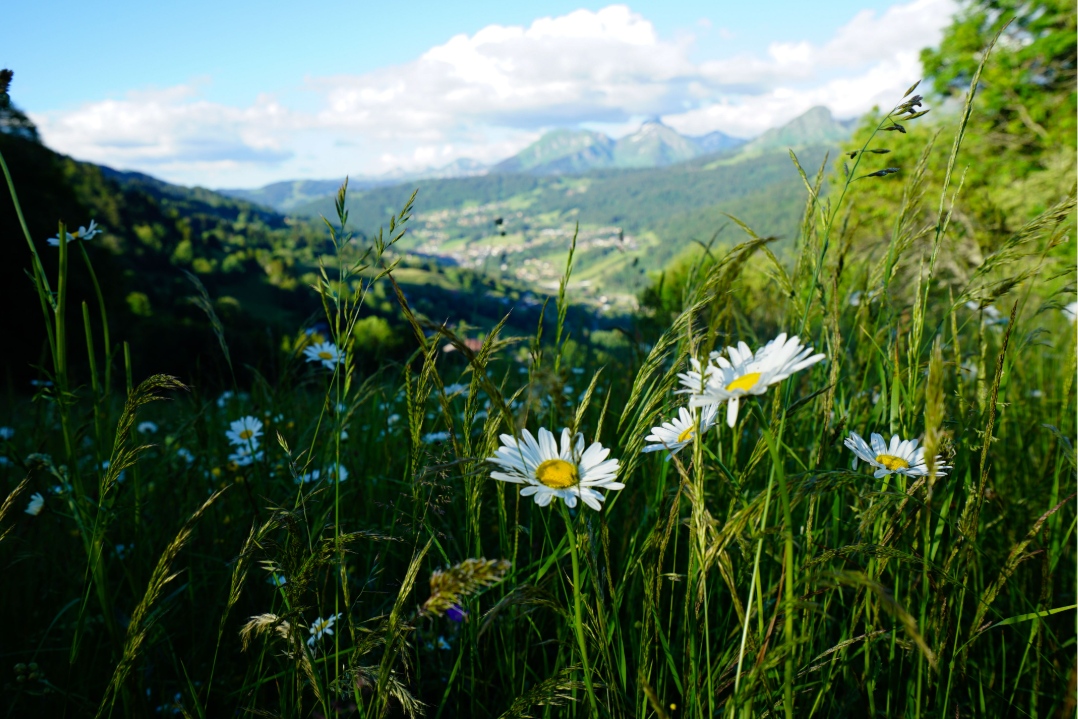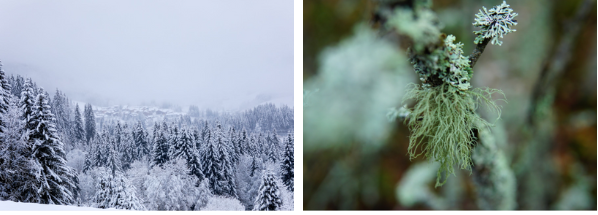The fauna and flora in Les Gets
Come and discover the nature that surrounds us
Small or large, come and explore the local fauna and flora of the Gets, whether for a simple walk in summer or to observe wildlife in winter. You will find fascinating animals, such as marmots and chamois, and remarkable plants, such as edelweiss and gentian. Les Gets is a true haven of biodiversity, perfect for nature lovers throughout the year.
In summer
Wildlife:
Marmots: These small rodents are easily spotted in the alpine pastures, especially between Mont Chéry and Mont Caly. They are particularly active in the early morning and late afternoon.
Chamois and ibex: Adapted to life in the mountains, these ungulates are often seen in less snowy areas. In summer, they prefer rocky slopes and ridges.
Deer and deer: Present in the surrounding forests, especially at dawn and dusk, deer and deer are visible during hikes.
Foxes and squirrels: These small mammals are often seen in the woods and meadows of the Gets. The fox, discreet but curious, often roams alone.
Raptors and mountain owls: The skies are the domain of raptors like the peregrine falcon or the golden eagle, who patrol over mountains. The rarer mountain owl can also be seen on night hikes.
Ermine: The ermine, with its white coat, can be seen in high altitude meadows and woods, especially towards the end of summer
Flora:
Edelweiss: A rare and protected flower that grows in the rocky and alpine regions. It is synonymous with the beauty of the Alpine mountains.
Fir: Fir forests are ubiquitous around the Gets, providing an ideal habitat for many animal species.
Gentiane: This blue flower, symbolic of the Alps, blooms in the high-altitude meadows. It is often used for its medicinal properties.
Blueberry: Blueberry bushes are a delight for walkers and an essential food for many animals in summer.
Arnica: Very popular for its medicinal properties, arnica grows in alpine meadows and is often used to treat muscle pain and injuries
In winter
Wildlife:
Chamois and ibex: In winter, these animals are more difficult to observe, but they remain present in less snowy areas, where they feed on grasses and shrubs.
Grouse: This beautiful bird hides under the snow to protect itself from the cold. It is difficult to spot because of its plumage that melts with snow.
Foxes and squirrels: Although less visible due to the cold, foxes remain active in winter, looking for food. Squirrels often hide in trees, but their tracks in the snow are sometimes visible.
Raptors: Raptors, such as the falcon and the golden eagle, can be seen hovering in the icy skies looking for prey.
Flora:
Hardy plants: In winter, plants such as bearded lichen, which grows only in cold, clean air, remain visible on trees and rocks.
Less vegetation: Snow covers most plants, but species such as arnica and fir persist, showing resistance to winter conditions.





